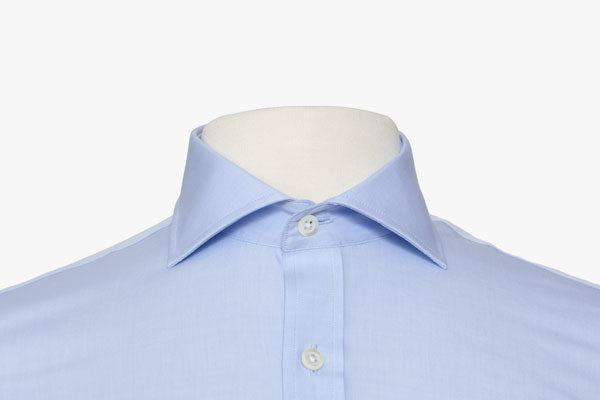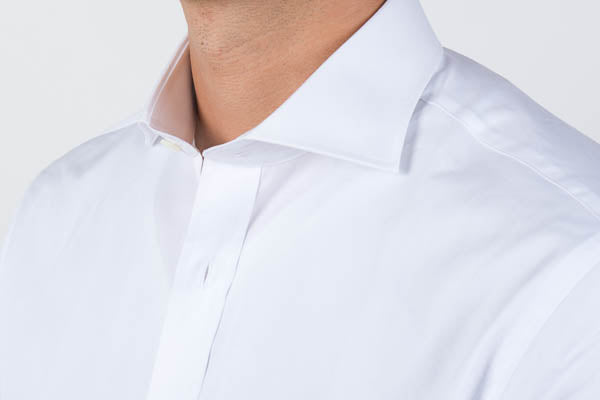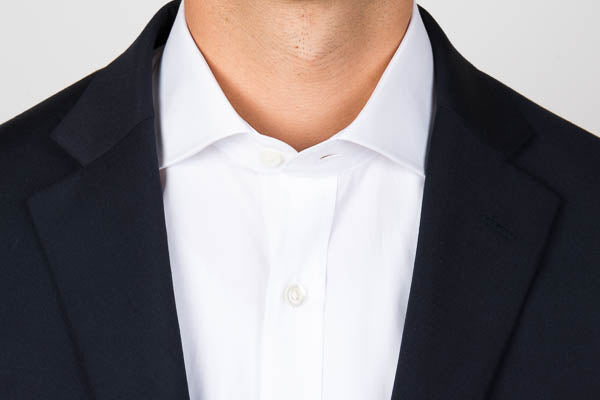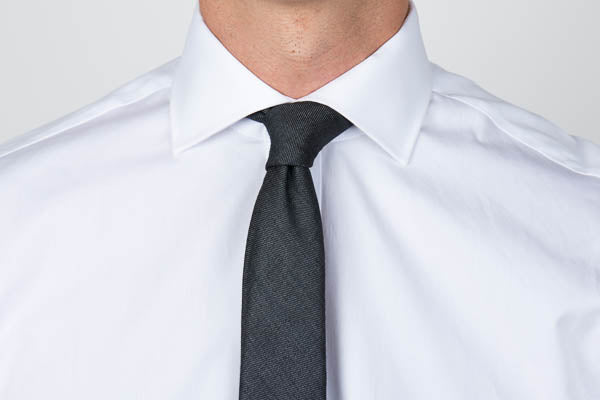A Primer on Men's Cutaway Collar Dress Shirts
A Collar Fit for a King

The cutaway collar first emerged in the 1930s as a response to the widely fashionable (and fashionably wide) Windsor tie knot. The unusually expansive knot was favored by the likes of Prince George and Edward VIII at the time, and the extreme spread of the cutaway collar was ideal to showcase such prominent neckwear.
Today, a cutaway collar is considered an elegant choice because of its collar points being farther apart, and angled outward as opposed to pointing downward. The extreme angle makes more of a statement than a standard collar, and while it still works well with a Windsor knot, the widespread also accommodates a bow tie very nicely. When paired with a thinner tie and a slimmer knot, it creates a decidedly more modern and fashion-forward look.
Despite the rumblings of some stuffy traditionalists, we think a cutaway collar also looks great without a tie. With just one or two buttons undone, it looks effortlessly cool with a subtle Euro look when worn with a blazer or under a knit sweater. Whether you decide to go with a tie or without, a cutaway collar also blends nicely into the lapels of a blazer or a suit, because the points end up hidden beneath them creating an elegant continuity.
Whether it’s on patterned or solid shirts, dressed up or dressed down, the cutaway is our most popular choice, and it may end up being the most versatile collar in your closet.
Shop for cutaway collar shirts.
Examples of Cutaway Collars

The Cutaway in Profile
From the front or the side, the cutaway collar always looks sophisticated, elegant and modern.

Unbuttoned and Relaxed
The cutaway collar doesn't have to be worn formally with a tie. Try a more casual blazer look.

With a Narrow Tie and Slim Knot
For a decidedly more modern feel, the cutaway works equally well with cleaner, sharper lines.